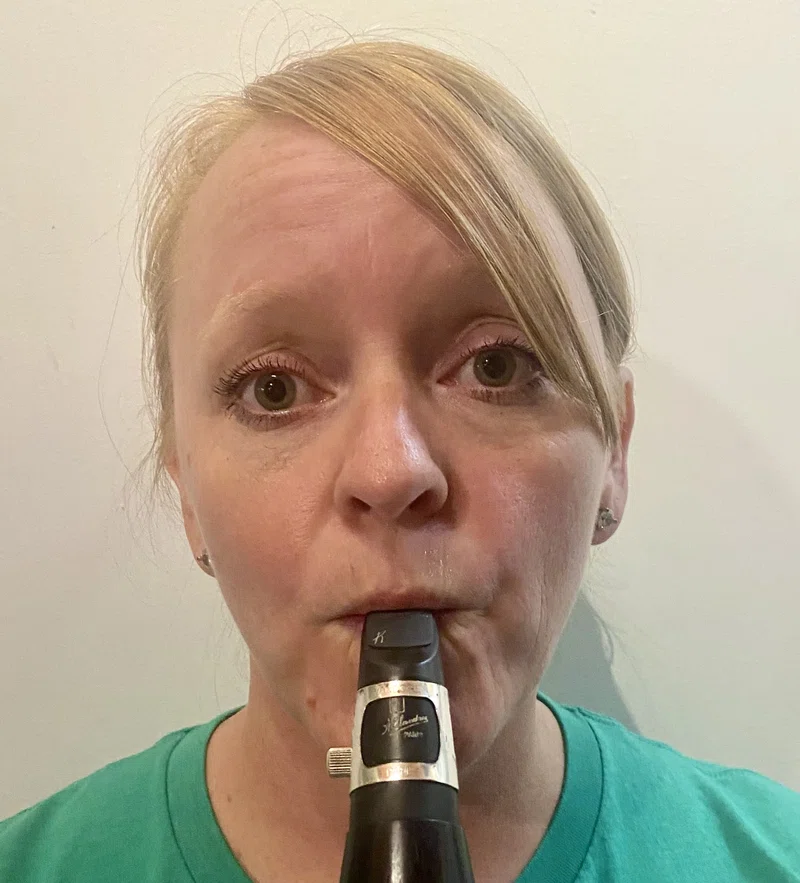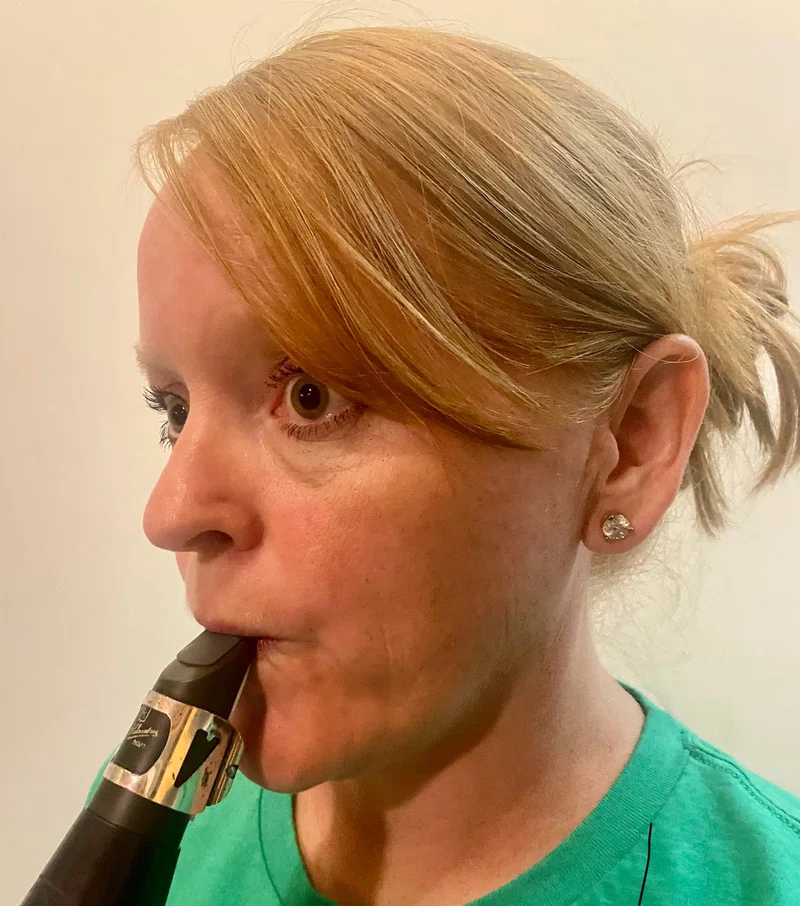©2023 Ohio Music Education Association



Getting your clarinet students started in a manner that will set them up for success in the future can sometimes be a grueling and time consuming task. However, if you do the work early in their musical development, you will save yourself a great deal of stress in the future. I am a veteran band director who is also an active clarinet performer. I have taught in three states and regardless of where I go, the clarinet struggles are the same. I hear (and see on social media) band directors who struggle to get the tone that they desire from their clarinet section, or have issues with intonation. I have put together some tips here that will hopefully help guide you in building strong clarinetists from day one. These tips are from my personal experience as an educator and performer. It is important to remember that what works for one does not always work for all.
Success from the Start
Success from the Start
Embouchure
Embouchure
I lead with this because in my early development this is where I struggled the most. In beginning band I was given information that caused me to build bad habits that were incredibly difficult to change. I was seeing success as a middle and high school student, having no access to private instruction, so I assumed I was doing things correctly. It wasn’t until I went to college that I realized just how bad my embouchure was, and how difficult it would be for me to make the changes necessary to pursue future performance opportunities. My clarinet teacher, Dr. Shannon Thompson at Western Carolina University, worked patiently with me to make those necessary changes. Erasing nine years of formed habits and basically starting over caused me to rethink my entire future. Once I finally developed an ideal embouchure I began to have performance success which allowed me to pursue opportunities that otherwise would not have been possible. I tell you this simply to reiterate how important it is to start your clarinet students off with correct information and a diligent eye.
- Do not tell them to roll their bottom lip over their teeth! Do we roll our lip over our teeth? A little, yes. But that happens more as a result of forming the bottom lip properly. When describing the shape of the embouchure I prefer to describe it like a drawstring bag. Once you pull the string it is taut all the way around, not just on the top and bottom. It is important to get a nice “O” shape that provides equal pressure from all angles, making sure to engage the corners. This should also cause the chin to naturally pull down into the flat position that we desire. The bottom lip should serve as a firm pillow for the reed to rest upon. If you are doing this but their lips are looking a bit puckered, then you may have to tell them to tuck the bottom lip a bit. If we simply tell students to roll their bottom lip over their teeth from the beginning then they are not working to build up the muscle in the bottom lip that is imperative for building that firm pillow, and a solid embouchure. It also causes extreme biting which results in a thin sound and sharp pitch.


- Anchor In! Think of both thumbs as supports for anchoring into the top teeth. The right thumb should be pushing up, and the left thumb should be pushing out. This will allow them to anchor into the back of the top teeth so that the pressure is not on their bottom lip/teeth. When the reed is resting heavily on the bottom lip it cuts off the vibrations and we do not get a clear tone. In my own middle school classes if the tone starts to sound weak or fuzzy I start by telling them “anchor in to those top teeth” and it immediately makes the tone more resonant. My band director would always walk around and try to wiggle our mouthpieces to make sure that we were holding it firmly. While this is helpful, make sure the firmness is coming from anchoring into the top teeth, not biting with the bottom.
- Everyone say “Heeh”! Tongue position is so important and often overlooked. I see band directors asking constantly on social media why their clarinets sound flat and nine times out of ten this is the problem. Clarinet players should keep their tongues high and forward all the time. It shouldn’t move between registers. A good way to practice this is by having them say “heeh” and to pay attention to where their tongue is. As your player starts getting stronger, a lot of times they will drop their tongue as they move higher thus resulting in a flat clarion register. This is something that takes conscientious practice to avoid or fix. Sometimes with older players I will have them put the sides of the back of their tongue on their top back molars and the tip of tongue directly behind the back of their top teeth and then have them attempt to play while maintaining that contact. Having their tongues actually make contact with their teeth reminds them of where it should be, and provides more awareness of tongue position. With beginners, make sure that they are practicing with just the barrel and the mouthpiece. When they play with these two pieces it should sound a concert F#. If it is coming out lower then they likely need to raise their tongue or firm up the corner of their lips. Avoid words like bite or squeeze if possible. If the pitch comes out too high then they are likely biting. Take a look at their chin. Is it pulled down and flat or do you see dimples? If you see dimples then they are biting and need to focus on rounding out that “O” and pulling down on their chin.




